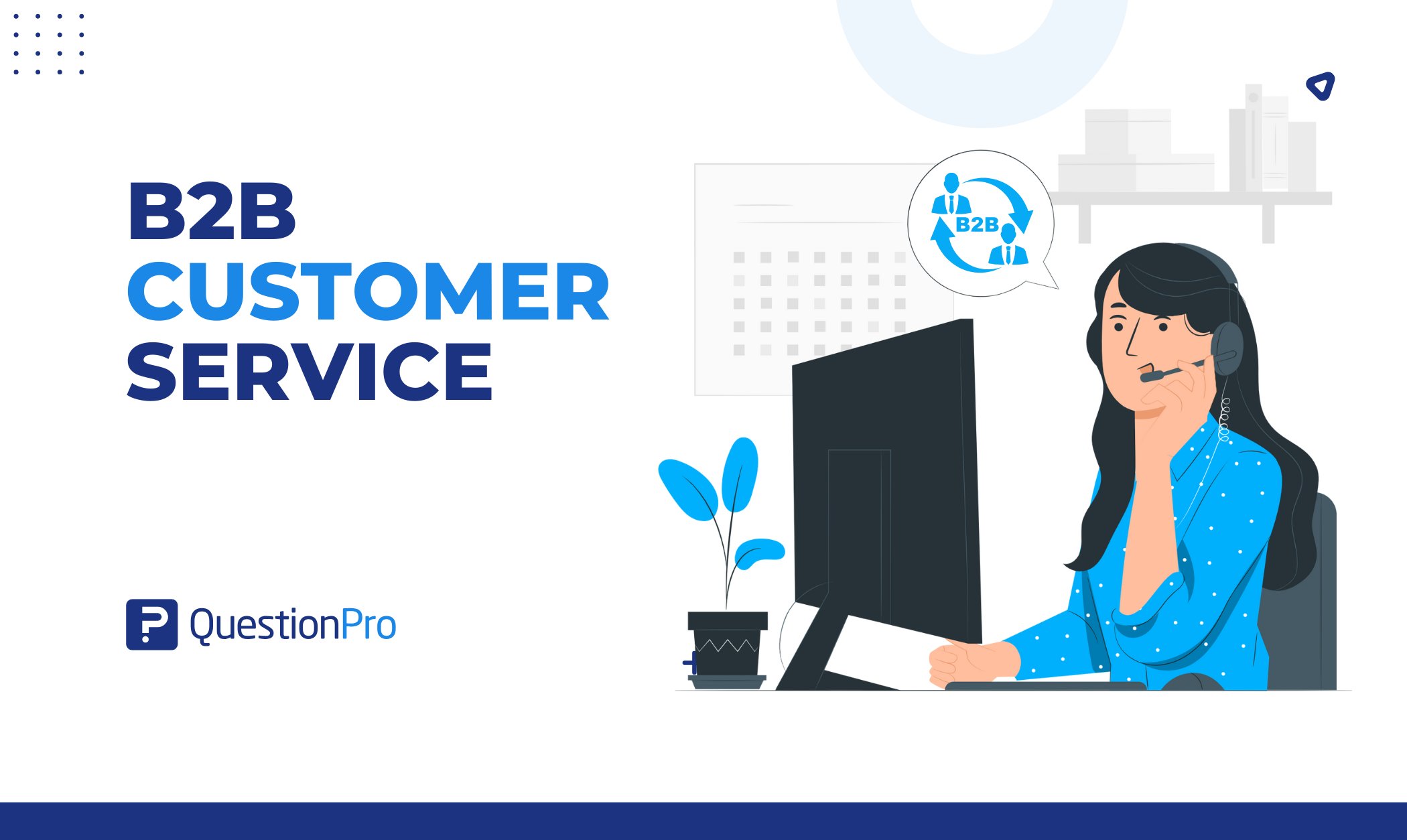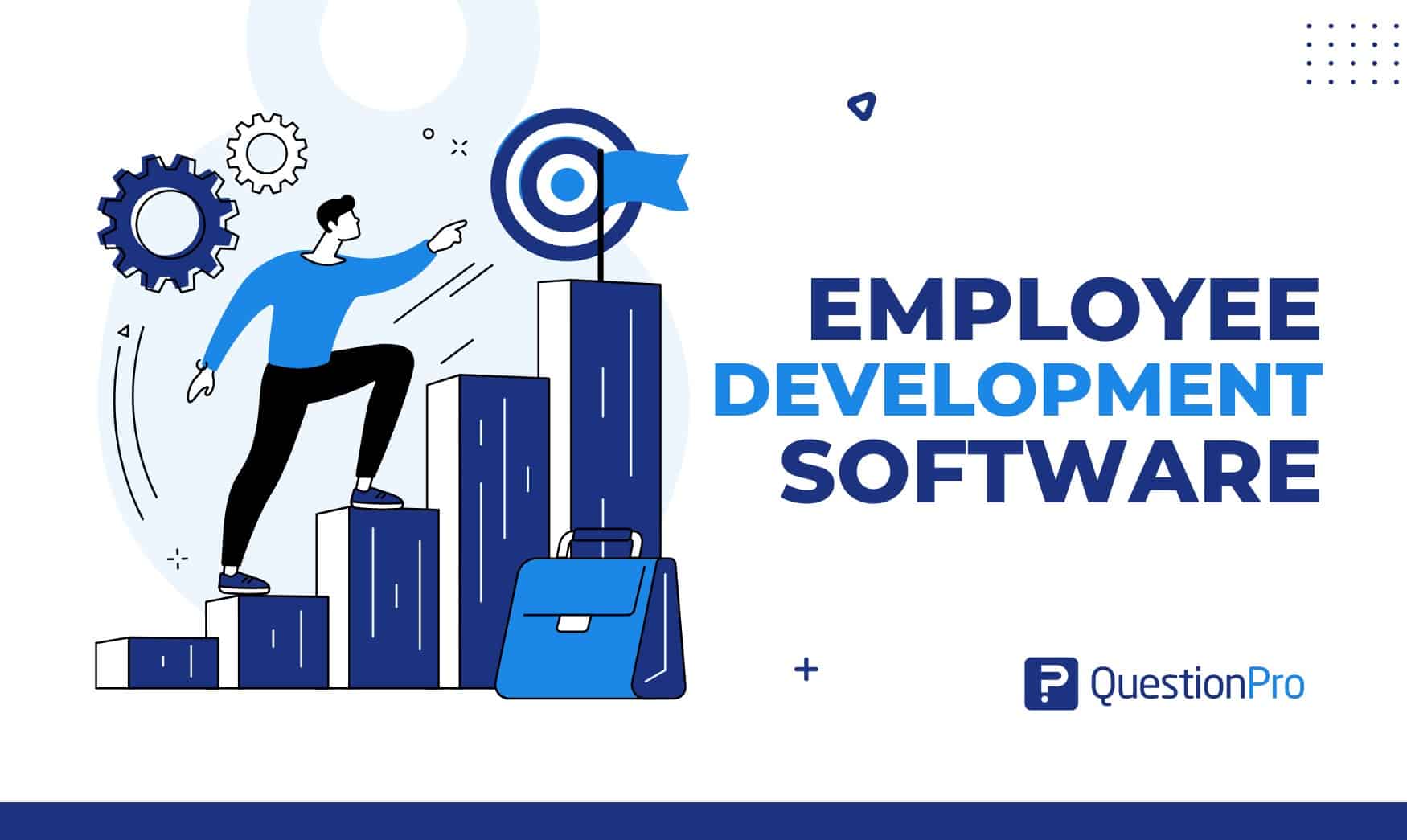
Companies increasingly recognize employee development’s vital role in driving organizational success. As the demand for skilled talent rises, businesses turn to innovative solutions such as Employee Development Software to nurture their workforce and stay ahead of the curve.
Elevate your employee training programs with an intuitive platform. Ensure your team has the latest skills and expertise to drive success. Start training employees today and unlock their full potential.
In this comprehensive guide, we dive into the significance of Employee Development Software and its benefits and highlight the top 10 solutions in the market.
What is an Employee Development Software?
Employee Development Software is a specialized tool designed to facilitate employee growth and skill enhancement within an organization. It is a centralized platform for managing various aspects of employee development, including training programs, skill assessments, performance evaluations, feedback mechanisms, and career progression plans.
This software streamlines the creation of personalized development plans tailored to individual employee needs and organizational goals. It often includes features such as
- Learning management systems (LMS),
- Performance management tools,
- Competency assessments and
- Analytics capabilities
- To track progress and
- Measure the effectiveness of development initiatives.
By providing employees access to relevant resources, feedback mechanisms, and opportunities for continuous learning, Employee Development Software plays a crucial role in fostering a culture of growth, engagement, and talent retention within the organization.
How to Choose Employee Development Software
Choosing the right employee development software for your organization is crucial for fostering growth, engagement, and productivity among your workforce. Here are some steps to help you make an informed decision:
- Identify Your Needs: Before starting your search, clearly define your organization’s goals and objectives for employee development. Determine the specific skills or competencies you want to develop in your workforce and any challenges you face in achieving these goals.
- Research: Research different employee development software solutions available in the market. Look for software that aligns with your organization’s size, industry, budget, and goals. Consider standalone employee development platforms and integrated solutions in larger HR or talent management suites.
- Features and Functionality: Evaluate the features and functionality offered by each software solution. Some key features to look for include:
- Learning Management System (LMS): Ability to create, manage, and deliver training content.
- Content Library: Access to a diverse range of learning materials such as courses, videos, articles, and webinars.
- Personalized Learning Paths: Capability to create customized learning paths tailored to individual employee needs and career goals.
- Skill Tracking and Assessments: Tools for assessing employee skills, tracking progress, and identifying areas for improvement.
- Collaboration and Social Learning: Features facilitating collaboration, knowledge sharing, and peer-to-peer learning.
- Analytics and Reporting: Robust reporting capabilities to track the effectiveness of training programs and measure employee progress.
- User Experience: Pay attention to the software’s user interface and overall user experience. It should be intuitive and easy to navigate for both administrators and employees. Consider requesting a demo or free trial to test the software firsthand.
- Integration: If you already use other HR or talent management software (such as performance management or recruitment systems), consider how well the employee development software integrates with your existing systems. Seamless integration can streamline processes and improve data accuracy.
- Scalability and Flexibility: Choose a software solution that can scale with your organization as it grows. It should also be flexible enough to accommodate different learning styles, formats, and delivery methods.
- Vendor Reputation and Support: Research the software vendor’s reputation, including its track record, customer reviews, and support services. Look for a vendor that offers responsive customer support, regular updates, and ongoing training resources.
- Cost Considerations: Evaluate the cost of implementing and maintaining the software, including subscription fees, setup costs, and ongoing support fees. Consider the return on investment (ROI) regarding improved employee performance, engagement, and retention.
- Security and Compliance: Ensure the software complies with relevant data privacy and security regulations, especially if handling sensitive employee information. Look for features such as data encryption, access controls, and compliance certifications.
- Seek Feedback: Finally, involve key stakeholders such as HR professionals, managers, and employees in the decision-making process. Gather feedback and insights from those using the software to ensure it meets their needs and expectations.
Learn About Employee Retention Software for Better Company Management
Top 10 Employee Development Software
Empower your workforce with cutting-edge online employee training software. These platforms below offer various training courses to enhance employee skills and knowledge. From comprehensive training programs to targeted courses, these provide the tools you need to develop your employees effectively.
1. QuestionPro Workforce
QuestionPro Workforce is comprehensive employee development software that streamlines learning and performance management processes. It leverages advanced analytics and intuitive features to enable organizations to foster a culture of continuous improvement and drive employee engagement.
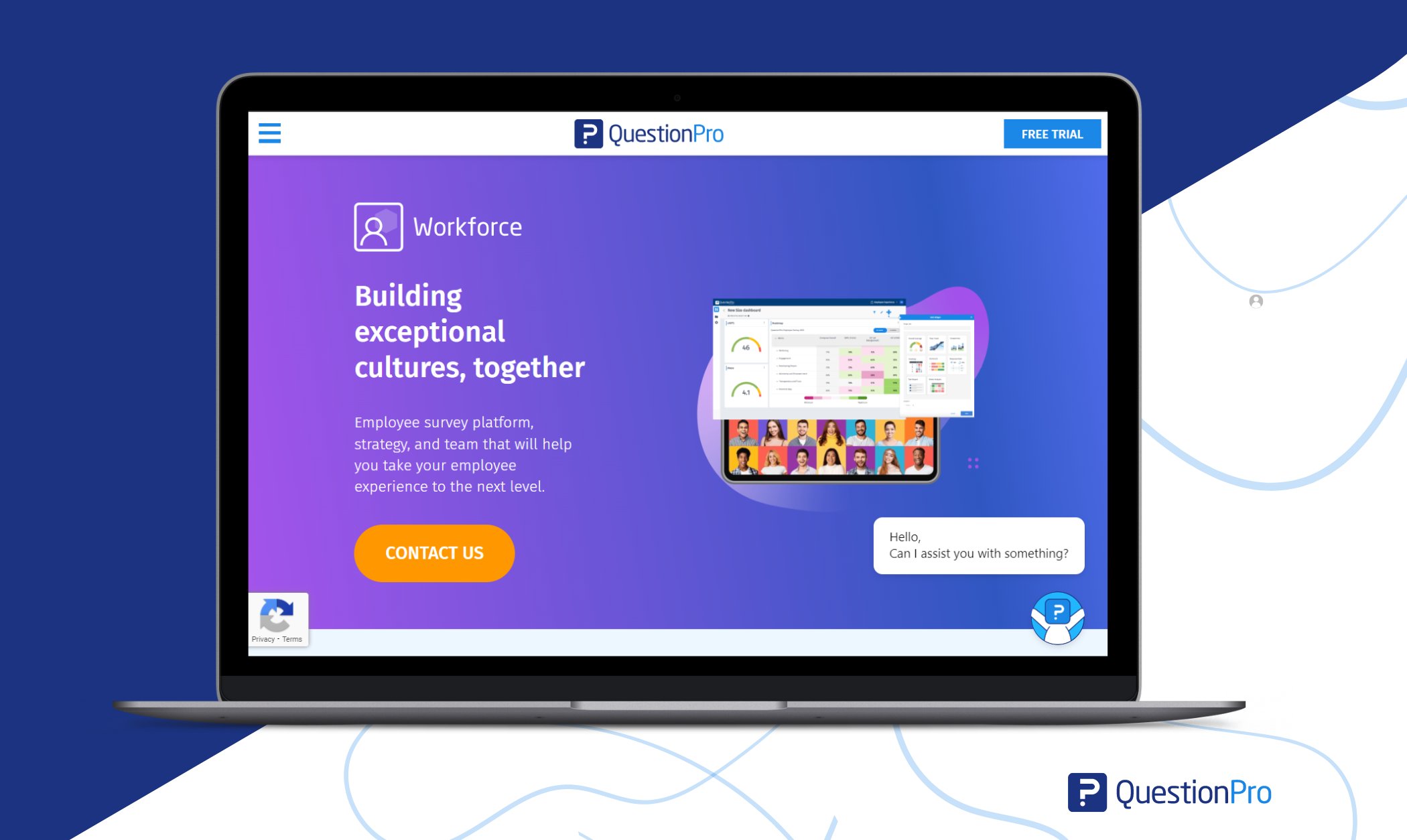
Features:
- 360-Degree Feedback
- Goal Setting and Tracking
- Training and Development Plans
- Real-Time Analytics
- Social Collaboration
- Performance Reviews
- Mobile Accessibility
- Integration Capabilities
Pros:
- A comprehensive suite of features covering all aspects of employee development and performance management.
- Intuitive interface and customizable workflows enhance user experience and adoption.
- Robust analytics provide valuable insights for strategic talent planning and decision-making.
- Scalable solutions are suitable for organizations of all sizes and industries.
- Mobile accessibility promotes flexibility and accessibility for remote and on-the-go employees.
Cons:
- Initial setup and customization may require technical expertise and resources.
- Advanced features such as predictive analytics and AI-driven recommendations may come at an additional cost.
Price: Essentials is Free. Advanced is $99 per user/per month. Team Edition is $83 per user/per month. More customized pricing is available upon request.
2. LinkedIn Learning
LinkedIn Learning offers a vast library of high-quality courses covering various topics, including technical skills, leadership development, and soft skills. Personalized recommendations and integration with LinkedIn profiles provide a seamless learning experience for professionals worldwide.
Features:
- Extensive Course Library
- Personalized Recommendations
- Integration with LinkedIn Profiles
- Mobile Accessibility
- Skill Assessments
- Certification Programs
- Learning Paths
- Analytics and Progress Tracking
Pros:
- Large and diverse course library catering to various learning needs and interests.
- Personalized recommendations based on individual preferences and career goals.
- Integration with LinkedIn profiles for easy access and sharing of achievements.
- Mobile accessibility enables learning on the go, anytime, anywhere.
- Skill assessments and certification programs validate learning outcomes and enhance credibility.
Cons:
- Limited customization options compared to standalone learning management systems.
- Subscription-based pricing models may be costly for individual users or small businesses without enterprise agreements.
3. TalentLMS
TalentLMS is a user-friendly learning management system suitable for businesses of all sizes. It offers robust features for creating, delivering, and tracking online training programs. With its intuitive interface and customization options, TalentLMS empowers organizations to manage employee development initiatives efficiently.
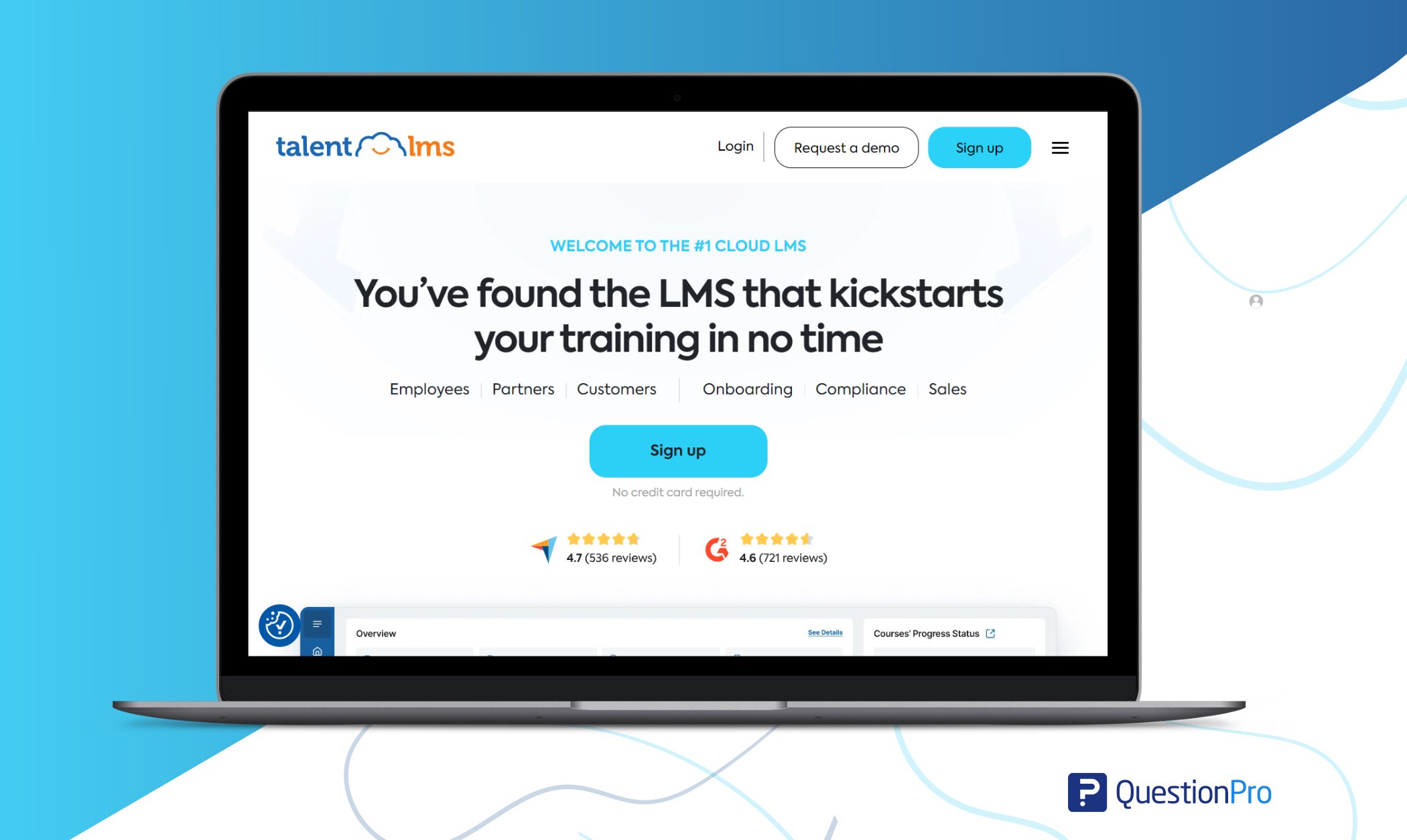
Features:
- Course Creation and Management
- Gamification Elements
- Mobile Accessibility
- Customization Options
- Reporting and Analytics
- Integration Capabilities
- Certification Management
- Social Learning Features
Pros:
- Intuitive and easy-to-use platform suitable for users with varying technical skills.
- Flexible customization options to tailor the platform to specific organizational needs.
- Gamification elements such as badges and leaderboards enhance engagement and motivation.
- A mobile app enables learning on smartphones and tablets, increasing accessibility.
- Robust reporting and analytics tools provide insights into learner progress and course effectiveness.
Cons:
- Limited advanced features compared to more comprehensive learning management systems.
- It may require additional integrations for specific functionalities such as HRIS or CRM systems.
4. Skillsoft
Skillsoft offers a comprehensive suite of eLearning solutions to enhance employee skills and competencies across various domains. With a vast library of courses, assessments, and certifications, Skillsoft enables organizations to address their learning and development needs effectively.
Features:
- Diverse Course Library
- Assessment Tools
- Certification Programs
- Personalized Learning Paths
- Analytics and Reporting
- Mobile Accessibility
- Integration Capabilities
- Virtual Instructor-Led Training (VILT)
Pros:
- Extensive course library covering a wide range of topics and industries.
- Assessment tools help identify skill gaps and personalize learning journeys.
- Certification programs validate skills and enhance employee credentials.
- Personalized learning paths cater to individual learning preferences and goals.
- Robust analytics provide insights into learner engagement and course effectiveness.
Cons:
- It may require additional investment for custom content development or specialized training.
- User interface and navigation could be improved for a more intuitive experience.
- Some organizations may find the pricing structure prohibitive for large-scale deployment.
5. ProProfs
ProProfs is a versatile online training platform that simplifies creating, delivering, and tracking training programs. With its user-friendly interface and extensive feature set, ProProfs empowers organizations to streamline employee development initiatives and achieve better learning outcomes.
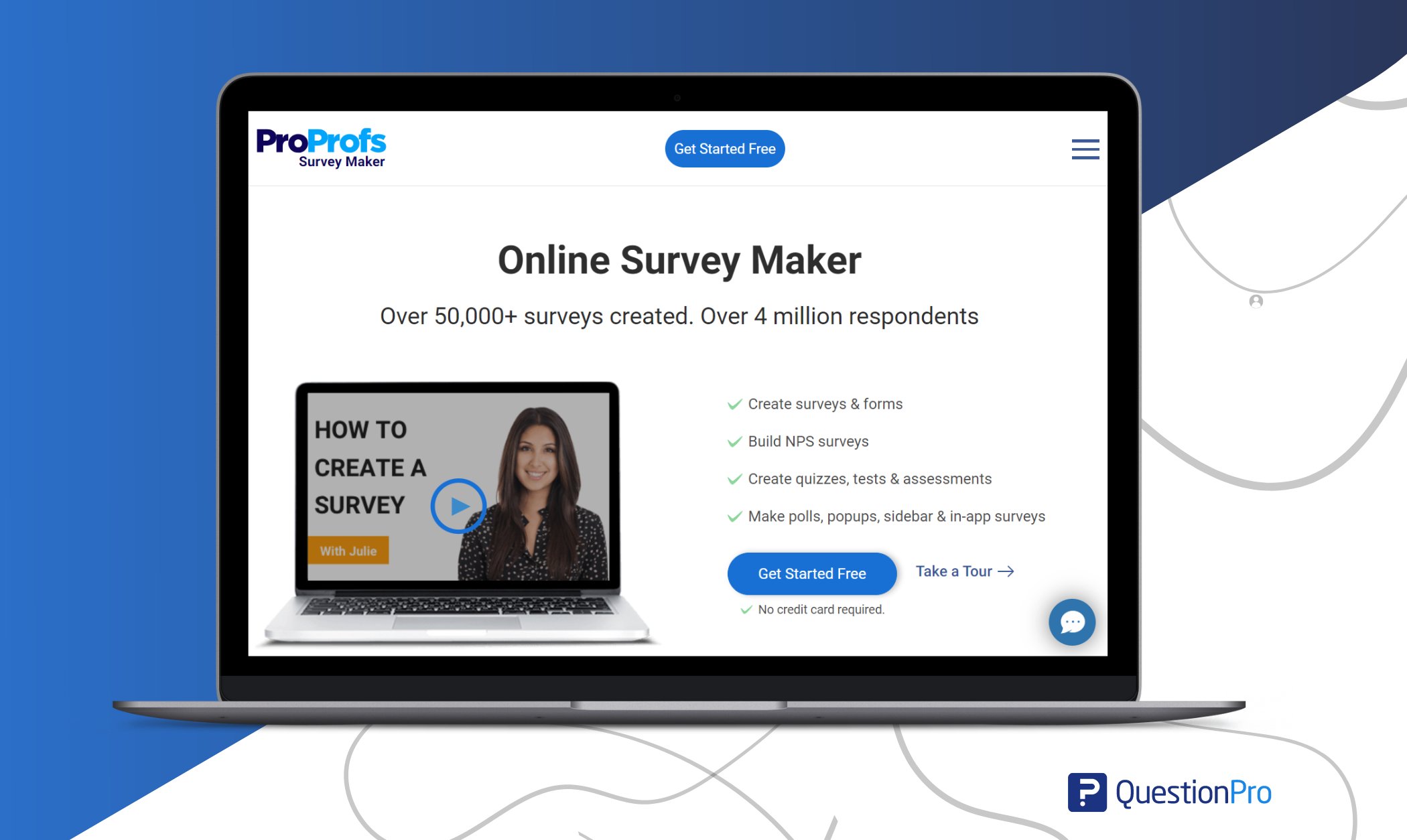
Features:
- Course Authoring Tools
- Quizzes and Assessments
- Interactive Learning Activities
- Progress Tracking
- Certification Management
- Collaboration Features
- Integration Capabilities
- Mobile Accessibility
Pros:
- Intuitive course authoring tools require minimal technical expertise to create engaging content.
- A wide variety of interactive learning activities, including quizzes, surveys, and flashcards.
- Robust progress tracking features provide real-time insights into learner performance and engagement.
- Integration capabilities allow seamless connectivity with existing systems and applications.
- Mobile accessibility enables learners to access training materials anytime, anywhere, on any device.
Cons:
- It has fewer advanced features compared to more specialized learning management systems.
- Customization options may be limited compared to enterprise-level platforms.
- Customer support response times could be improved for timely issue resolution.
6. Adobe Captivate Prime
Adobe Captivate Prime is a modern learning management system that delivers engaging and impactful learning experiences. Its intuitive interface, robust features, and integration capabilities enable organizations to manage employee development programs and drive business success effectively.
Features:
- Intuitive User Interface
- Content Authoring Tools
- Gamification Elements
- Mobile Accessibility
- Integration Capabilities
- Analytics and Reporting
- Social Learning Features
- Compliance Training
Pros:
- A sleek and intuitive user interface enhances usability and adoption among learners and administrators.
- Built-in content authoring tools enable rapid creation and deployment of engaging learning materials.
- Gamification elements such as badges, leaderboards, and rewards enhance learner engagement and motivation.
- Mobile app allows learners to access training content on the go, anytime, anywhere.
- Integration capabilities enable seamless connectivity with existing HRIS, CRM, and other systems.
Cons:
- Pricing may be prohibitive for small businesses or organizations with limited budgets.
- Some users may find the learning curve steep when mastering advanced features and customization options.
- Certain features, like virtual classroom integration, may require additional plugins or customization.
7. LearnUpon
LearnUpon is a cloud-based learning management system that provides a powerful yet easy-to-use platform for managing online training programs. With its intuitive interface, robust features, and extensive integrations, LearnUpon empowers organizations to deliver engaging and impactful learning experiences to their employees.
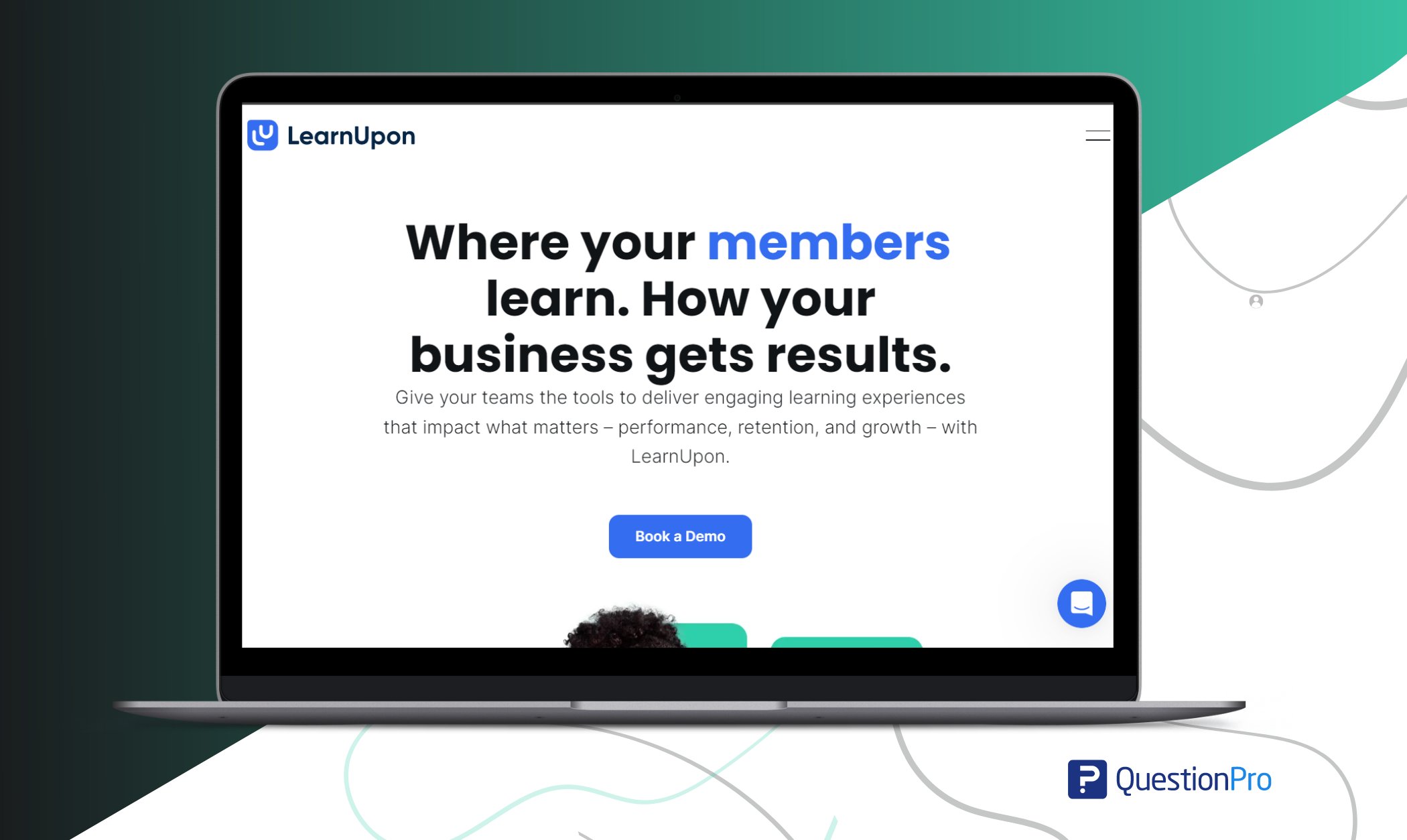
Features:
- Course Creation and Management
- Assessment Tools
- Mobile Accessibility
- Gamification Elements
- Reporting and Analytics
- Integration Capabilities
- Certification Management
- Social Learning Features
Pros:
- An intuitive and user-friendly interface requires minimal training for administrators and learners.
- Robust assessment tools enable organizations to measure learner progress and performance effectively.
- Mobile app allows learners to access training content on the go, anytime, anywhere.
- Gamification elements such as badges, points, and leaderboards enhance learner engagement and motivation.
- Extensive integration capabilities enable seamless connectivity with existing systems and applications.
Cons:
- Limited customization options compared to more advanced learning management systems.
- Some users may experience occasional technical glitches or performance issues.
- Certain advanced features, such as AI-driven recommendations, may not be available in all pricing tiers.
8. Looop
Looop is a modern learning platform that delivers personalized and engaging learning experiences. With its intuitive interface, adaptive learning, and integration capabilities, Looop empowers organizations to drive employee performance and achieve business success.
Features:
- Adaptive Learning Paths
- Content Curation Tools
- Mobile Accessibility
- Integration Capabilities
- Analytics and Reporting
- Social Learning Features
- Gamification Elements
Pros:
- Adaptive learning paths dynamically adjust based on individual learner needs and preferences.
- Content curation tools allow administrators to create and curate engaging learning materials easily.
- Mobile app enables learners to access training content on the go, anytime, anywhere.
- Integration capabilities enable seamless connectivity with existing HRIS, CRM, and other systems.
- Robust analytics provide insights into learner engagement, progress, and performance.
Cons:
- Pricing may be higher compared to some other learning management systems.
- Customization options may be limited compared to more advanced platforms.
- Customer support response times could be improved for timely issue resolution.
9. Connecteam
Connecteam is a comprehensive employee management platform with training, communication, and task management features. With its intuitive interface, mobile accessibility, and extensive feature set, Connecteam enables organizations to streamline employee development initiatives and improve productivity.
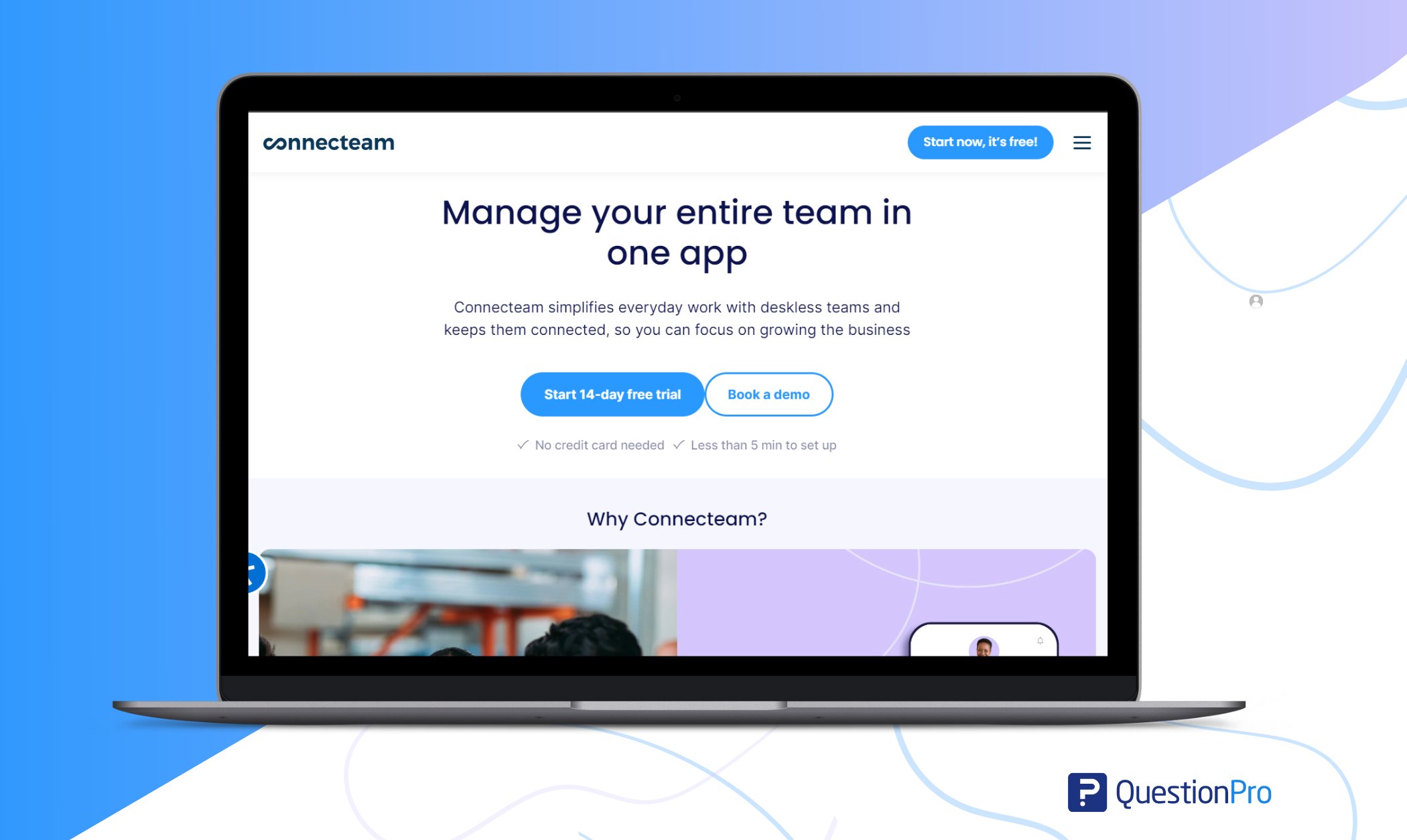
Features:
- Training and Development Modules
- Mobile Accessibility
- Communication Tools
- Task Management Features
- Reporting and Analytics
- Integration Capabilities
- Employee Engagement Features
Pros:
- User-friendly interface and intuitive navigation enhance usability and adoption among employees.
- Mobile app allows employees to access training materials, communicate, and manage tasks from anywhere.
- Communication tools facilitate seamless collaboration and information sharing among team members and enhance team cohesion.
- Task management features enable efficient assignment, tracking, and completion of tasks and projects.
- Robust reporting and analytics provide insights into the best employee training software progress and performance.
- Integration capabilities allow seamless connectivity with existing systems such as HRIS and CRM.
Cons:
- It may need more advanced learning management features compared to specialized platforms.
- Limited customization options for training content and workflows.
- Some organizations may find the pricing structure less competitive compared to other solutions.
10. Docebo
Docebo is a leading learning management system trusted by organizations worldwide for its powerful features and user-friendly interface. With its advanced capabilities, including AI-driven recommendations, social learning, and mobile accessibility, Docebo empowers organizations to deliver impactful and engaging learning experiences to their employees.
Features:
- AI-Driven Recommendations
- Social Learning Features
- Mobile Accessibility
- Integration Capabilities
- Advanced Reporting and Analytics
- Certification Management
- Content Authoring Tools
- Gamification Elements
Pros:
- AI-driven recommendations personalize learning paths based on individual learner preferences and behavior.
- Social learning features facilitate collaboration, knowledge sharing, and peer-to-peer support.
- Mobile app enables learners to access training content anytime, anywhere, on any device.
- Integration capabilities allow seamless connectivity with existing systems such as HRIS and CRM.
- Advanced reporting and analytics provide actionable insights into learner engagement and course effectiveness.
Cons:
- It may require additional investment for advanced features such as AI-driven recommendations.
- Customization options may be limited compared to more specialized platforms.
- Some users may experience occasional technical issues or performance issues with the platform.
Recently, QuestionPro published a blog about Knowledge Management Software. You can check it out if you want.
Benefits of Using an Employee Development Software
Using Employee Development Software offers many benefits for organizations looking to foster the growth and development of their workforce. Here are some key advantages:
Personalized Learning
Employee Development Software enables organizations to create customized development plans based on each employee’s unique needs and aspirations, fostering a culture of continuous learning and growth.
Improved Performance
Employee development software empowers employees to enhance their skills and productivity by providing access to relevant training resources, feedback mechanisms, and performance evaluations. This leads to improved job performance and organizational outcomes.
Enhanced Employee Engagement
Investing in employee development demonstrates a commitment to employees’ professional growth and career advancement, leading to higher levels of engagement, job satisfaction, and retention.
Talent Retention
Employee Development Software helps organizations identify and nurture top talent, reducing turnover rates and the associated costs of recruiting and training new employees.
Strategic Alignment
By aligning development initiatives with organizational goals and objectives, Employee Development Software helps ensure employees have the skills and competencies to drive business success.
Knowledge Management is relevant to Employee development. You can explore the recent blog explored by QuestionPro about Knowledge Management Systems.
How QuestionPro Workforce Can Be a Good Employee Development Software
QuestionPro Workforce can be an excellent choice for Employee Development Software due to its comprehensive features and user-friendly interface. Here’s how QuestionPro Workforce stands out in facilitating employee development:
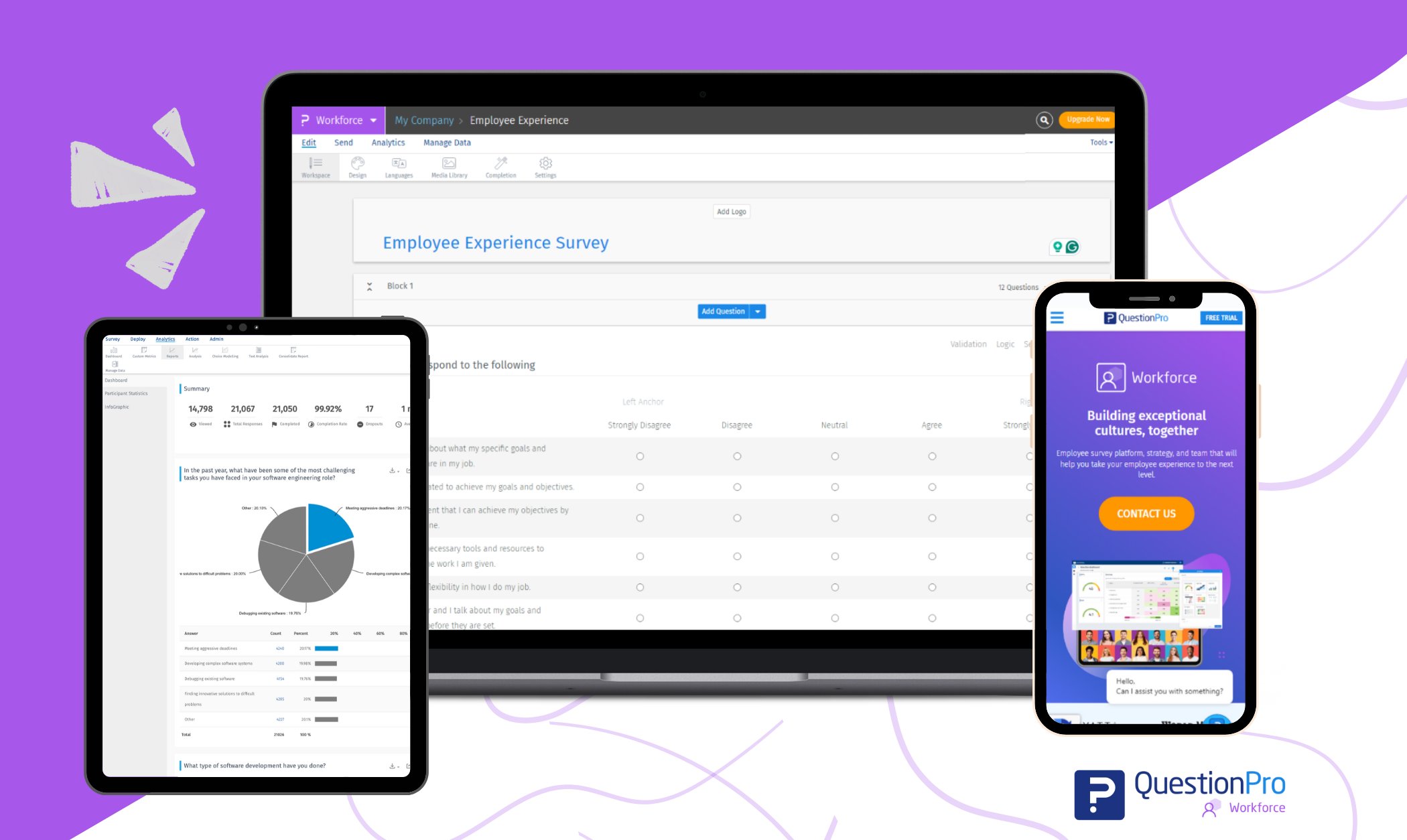
1. Personalized Development Plans
QuestionPro Workforce allows organizations to create personalized development plans for each employee. These plans can be tailored to align with organizational goals and employees’ skills, interests, and career aspirations.
QuestionPro Workforce ensures employees receive relevant and impactful training and development opportunities by providing customized learning paths.
2. Engaging Learning Experiences
The platform offers a variety of interactive learning modules, multimedia content, and gamified challenges to keep employees engaged and motivated throughout their development journey.
From e-learning courses to virtual classrooms, QuestionPro Workforce provides various tools to deliver engaging and interactive learning experiences that cater to different learning styles.
3. Continuous Feedback
QuestionPro Workforce facilitates a culture of continuous feedback and growth by providing tools for performance assessments, peer evaluations, and 360-degree reviews. Employees can receive regular feedback from managers, peers, and mentors, allowing them to identify areas for improvement and track their progress over time.
This feedback loop fosters a culture of learning and development within the organization, driving continuous improvement at all levels.
4. Advanced Analytics
With robust analytics capabilities, QuestionPro Workforce enables organizations to measure training effectiveness, identify skill gaps, and track employee progress.
HR professionals can access real-time data and insights to evaluate the impact of development initiatives, identify trends, and make data-driven decisions about talent development strategies. Organizations can optimize employee development programs by leveraging advanced analytics to maximize ROI and drive business outcomes.
5. Scalability and Flexibility
QuestionPro Workforce can scale to accommodate the needs of organizations of all sizes and industries. Whether a small team or a large enterprise, the platform can adapt to changing business requirements and accommodate diverse learning and development needs.
With customizable features and flexible deployment options, QuestionPro Workforce offers scalability and flexibility to support organizations’ growth and evolution over time.
6. Comprehensive Solution
QuestionPro Workforce provides a comprehensive solution for employee development, encompassing all aspects of learning and talent management. The platform offers many features to support the entire employee lifecycle, from onboarding and skill assessments to performance management and career development.
By consolidating all development activities into a single platform, QuestionPro Workforce streamlines processes improves efficiency, and enhances employee experience.
Learn About: Employee Lifecycle Management Software
Conclusion
Employee Development Software is a cornerstone of organizational success in today’s dynamic business environment. By investing in employees’ professional growth and skill enhancement, businesses can cultivate a high-performing workforce capable of driving innovation, productivity, and sustainable development.
Whether it’s personalized learning experiences, performance insights, or talent analytics, Employee Development Software offers myriad benefits that position companies for long-term success. As you explore the diverse range of solutions available, consider each platform’s unique features and capabilities to find the perfect fit for your organization’s needs.
QuestionPro Workforce offers a robust and intuitive solution for employee development, empowering organizations to create a culture of continuous learning and growth.
With its personalized learning experiences, engaging content, continuous feedback mechanisms, advanced analytics, scalability, and comprehensive features, QuestionPro Workforce stands out as a top choice for organizations looking to invest in the development and success of their workforce.
Frequently Asked Questions (FAQs)
A: Employee development software facilitates growth and skill enhancement within organizations by providing tools for training, performance evaluations, and personalized learning plans.
A: By offering personalized learning paths and continuous feedback, employee development software helps employees feel valued and invested in, which can lead to increased job satisfaction and reduced turnover rates.
A: Key features include a Learning Management System (LMS), personalized learning paths, skill assessments, analytics, mobile accessibility, and integration with other HR systems.
A: Employee development software aligns with organizational goals by creating development plans that focus on acquiring skills and competencies that support business objectives, driving both individual and company success.
A: Mobile accessibility is crucial as it allows employees to access training materials anytime, anywhere, which increases flexibility and ensures continuous learning, even for remote or on-the-go employees.







